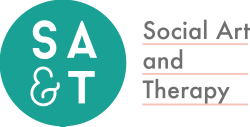SA-T Climbing Groups with Lee
Background
Teaching climbing has been a natural evolution alongside my clinical work and art practice. My yoga practice began when aged 15 I bought a brown book, with YOGA embossed on it in gold, in a charity shop. With the book open in front of me (no mobile phones or laptops then!) I would hold poses in my bedroom at home in Devon, then also in the nearby fields where I would go jogging.
Around 17 years of age I started Muay Thai boxing, where I learned how to punch and kick hard. The first few sessions I would giggle when kicking, but under the guidance of Karen Ousey in Paignton (three times world champion) I connected with the strength of my body in a new way. I also enjoyed the stretching and learning about the history of this sport, which is from Thailand and influenced by Buddhist principles.
This influenced my work as an art student; I trained in Muay Thai in Southport and Thailand, experienced fighting in the ring, also painting and sculpting boxing matches (abstracts) and thinking about the exchange between fighters and the meridians - a notion of energy flow used in Chinese medicine. I continued to run, stopping for long stretches when at a nice view or quiet spot along the way, combining yoga with warm ups from martial arts.
Having seen the damage Muay Thai can inflict on people - through direct fighting injuries and over time with wear and tear on the body and mind (punch drunk / brain damaged) I switched to Hung Ga King Fu and Tai Chi Chuan. I studied Taoist texts as part of my art degree and took an evening course in Shiatsu massage, which is similar to Thai massage used on fighters before and after they ring fight.
Following my degree I moved to Japan teaching English for two years, making art, training in Karate and learning more directly about Eastern philosophy. I continued to develop my sequence of stretches during jogs along the river and in parks, now including breathing exercises from tai chi and with influence from shiatsu.
One morning having woken up in a bad mood for no apparent reason, I remember being unable to manage a one legged pose I'd been practicing for years. I learned to concentrate on my core, still my mind and after numerous attempts I could hold the pose; later noticing my bad mood had dispersed. That was the first time that I really understood the concept of a 'center' of stillness. I was also practicing 'mindfulness', without knowing what it was: walking slowly aware on the light, colours, smells and seasons. In my second year it was beautiful to recognise colours and smells that I had witnessed only once before.
Following this I changed my plan from returning to a Fine Art Masters in Cornwall, UK, to move to London and study 'Design for Environment' (art with eco design). For the first few years in London I couldn't afford classes or gym membership but continued with running, long walks and the stretching exercises along the River Thames, later picking up jive dance, which had a similar sense of focus and exchange to the martial arts but was more gentle and fun. Eventually life arranged itself in a way that I could work freelance in the arts and undertake further study in Art Psychotherapy, a long standing interest.
This opened up a whole new world of being able to use art to heal, which I decided to pursue alongside my fine art practice, rather than competing for increasingly limited art commissions. Some years into my clinical practice I found EMDR - a form of psychotherapy that is also image based but working with both the body and mind together. With this addition I found I was able to help people more quickly, including those who had suffered severe trauma.
My EMDR supervision group suggested that for people who weren't ready for EMDR something called EFT could be helpful in preparation and building resources. I took a basic training and found it used some of the meridians and pressure points that shiatsu massage works with, but with a psychological element. It seemed a bit odd to use with my therapy clients, but the very next day a lady came to my studio / clinic who could not stop crying; intuitively I tried it and she was able to calm herself, so EFT remains active in my therapeutic tool box.
Rock Climbing
Looking back, scrambling and hiking have always been there, as they are for any child growing up in the countryside. A childhood friend was an enthusiastic climber and would send me up cliffs here and there and I would always take the opportunity to go to mountains and open spaces.
At the end of the Art Psychotherapy training I had started going bouldering regularly in London (climbing indoors without ropes). Naturally I introduced friends to this, including parts of my warm up to avoid injury. Climbing also proved a great sport for people in situations of conflict - environmental (war) and internal. Whilst providing Art Psychotherapy in Lebanon (2012) a love of sport climbing really took hold.
When working with people therapeutically if I think breathing exercises or yoga poses will be helpful I do share them, so it felt natural to take people climbing and skill up on my teaching - taking climbing instructor trainings and making it more formal. My studio is based next door to The Reach Climbing Centre, which is handy, and The Yoga Space London, based further up the river at Woolwich Arsenal has been great. Their teachers are all conscious of where their practices are derived from, respecting the history of yoga whilst making it accessible to people in the West. They have collaborated with me on an art / climbing / yoga hybrid, which is included in the photos on the SA-T climbing page.
Background
Teaching climbing has been a natural evolution alongside my clinical work and art practice. My yoga practice began when aged 15 I bought a brown book, with YOGA embossed on it in gold, in a charity shop. With the book open in front of me (no mobile phones or laptops then!) I would hold poses in my bedroom at home in Devon, then also in the nearby fields where I would go jogging.
Around 17 years of age I started Muay Thai boxing, where I learned how to punch and kick hard. The first few sessions I would giggle when kicking, but under the guidance of Karen Ousey in Paignton (three times world champion) I connected with the strength of my body in a new way. I also enjoyed the stretching and learning about the history of this sport, which is from Thailand and influenced by Buddhist principles.
This influenced my work as an art student; I trained in Muay Thai in Southport and Thailand, experienced fighting in the ring, also painting and sculpting boxing matches (abstracts) and thinking about the exchange between fighters and the meridians - a notion of energy flow used in Chinese medicine. I continued to run, stopping for long stretches when at a nice view or quiet spot along the way, combining yoga with warm ups from martial arts.
Having seen the damage Muay Thai can inflict on people - through direct fighting injuries and over time with wear and tear on the body and mind (punch drunk / brain damaged) I switched to Hung Ga King Fu and Tai Chi Chuan. I studied Taoist texts as part of my art degree and took an evening course in Shiatsu massage, which is similar to Thai massage used on fighters before and after they ring fight.
Following my degree I moved to Japan teaching English for two years, making art, training in Karate and learning more directly about Eastern philosophy. I continued to develop my sequence of stretches during jogs along the river and in parks, now including breathing exercises from tai chi and with influence from shiatsu.
One morning having woken up in a bad mood for no apparent reason, I remember being unable to manage a one legged pose I'd been practicing for years. I learned to concentrate on my core, still my mind and after numerous attempts I could hold the pose; later noticing my bad mood had dispersed. That was the first time that I really understood the concept of a 'center' of stillness. I was also practicing 'mindfulness', without knowing what it was: walking slowly aware on the light, colours, smells and seasons. In my second year it was beautiful to recognise colours and smells that I had witnessed only once before.
Following this I changed my plan from returning to a Fine Art Masters in Cornwall, UK, to move to London and study 'Design for Environment' (art with eco design). For the first few years in London I couldn't afford classes or gym membership but continued with running, long walks and the stretching exercises along the River Thames, later picking up jive dance, which had a similar sense of focus and exchange to the martial arts but was more gentle and fun. Eventually life arranged itself in a way that I could work freelance in the arts and undertake further study in Art Psychotherapy, a long standing interest.
This opened up a whole new world of being able to use art to heal, which I decided to pursue alongside my fine art practice, rather than competing for increasingly limited art commissions. Some years into my clinical practice I found EMDR - a form of psychotherapy that is also image based but working with both the body and mind together. With this addition I found I was able to help people more quickly, including those who had suffered severe trauma.
My EMDR supervision group suggested that for people who weren't ready for EMDR something called EFT could be helpful in preparation and building resources. I took a basic training and found it used some of the meridians and pressure points that shiatsu massage works with, but with a psychological element. It seemed a bit odd to use with my therapy clients, but the very next day a lady came to my studio / clinic who could not stop crying; intuitively I tried it and she was able to calm herself, so EFT remains active in my therapeutic tool box.
Rock Climbing
Looking back, scrambling and hiking have always been there, as they are for any child growing up in the countryside. A childhood friend was an enthusiastic climber and would send me up cliffs here and there and I would always take the opportunity to go to mountains and open spaces.
At the end of the Art Psychotherapy training I had started going bouldering regularly in London (climbing indoors without ropes). Naturally I introduced friends to this, including parts of my warm up to avoid injury. Climbing also proved a great sport for people in situations of conflict - environmental (war) and internal. Whilst providing Art Psychotherapy in Lebanon (2012) a love of sport climbing really took hold.
When working with people therapeutically if I think breathing exercises or yoga poses will be helpful I do share them, so it felt natural to take people climbing and skill up on my teaching - taking climbing instructor trainings and making it more formal. My studio is based next door to The Reach Climbing Centre, which is handy, and The Yoga Space London, based further up the river at Woolwich Arsenal has been great. Their teachers are all conscious of where their practices are derived from, respecting the history of yoga whilst making it accessible to people in the West. They have collaborated with me on an art / climbing / yoga hybrid, which is included in the photos on the SA-T climbing page.








